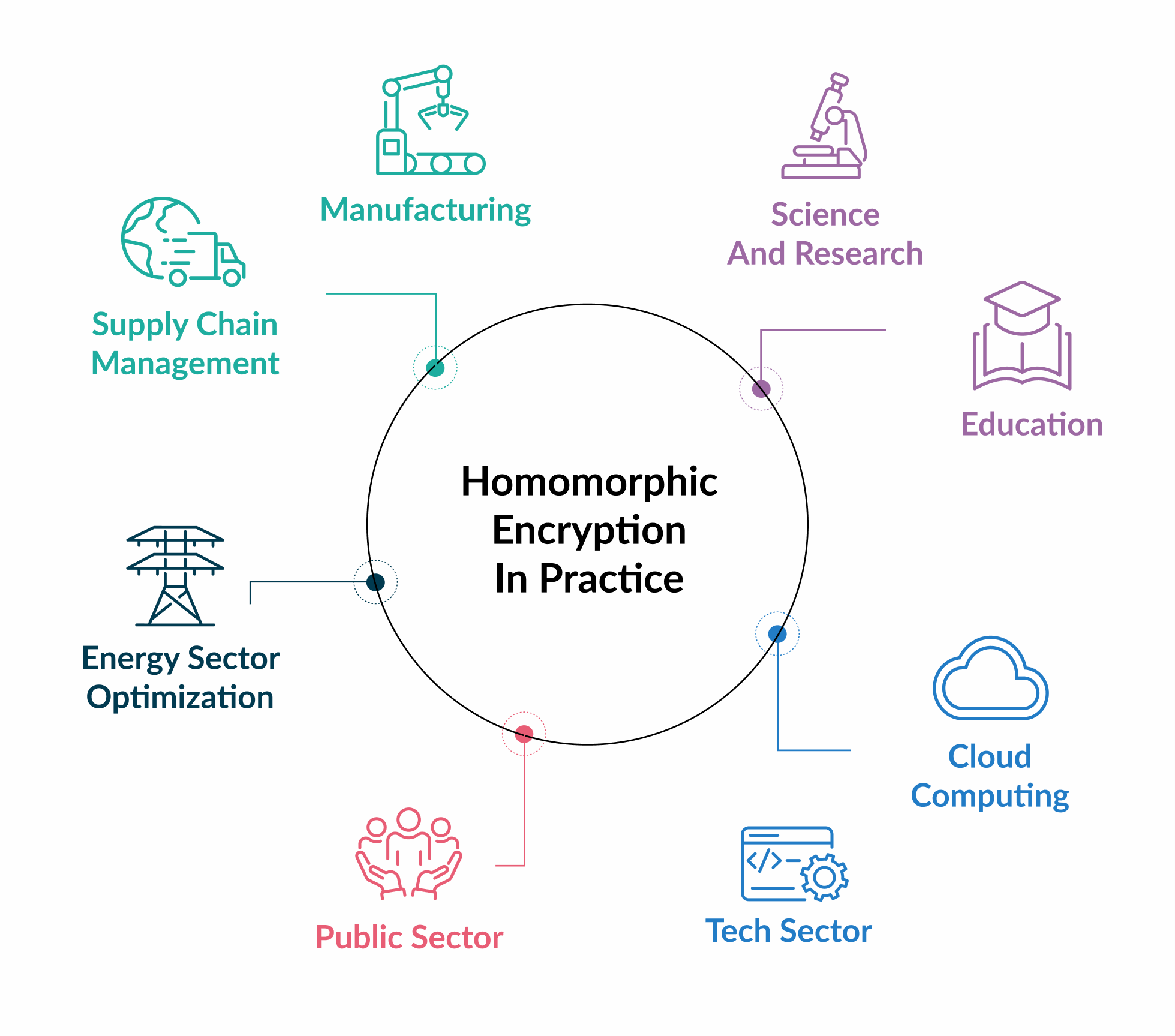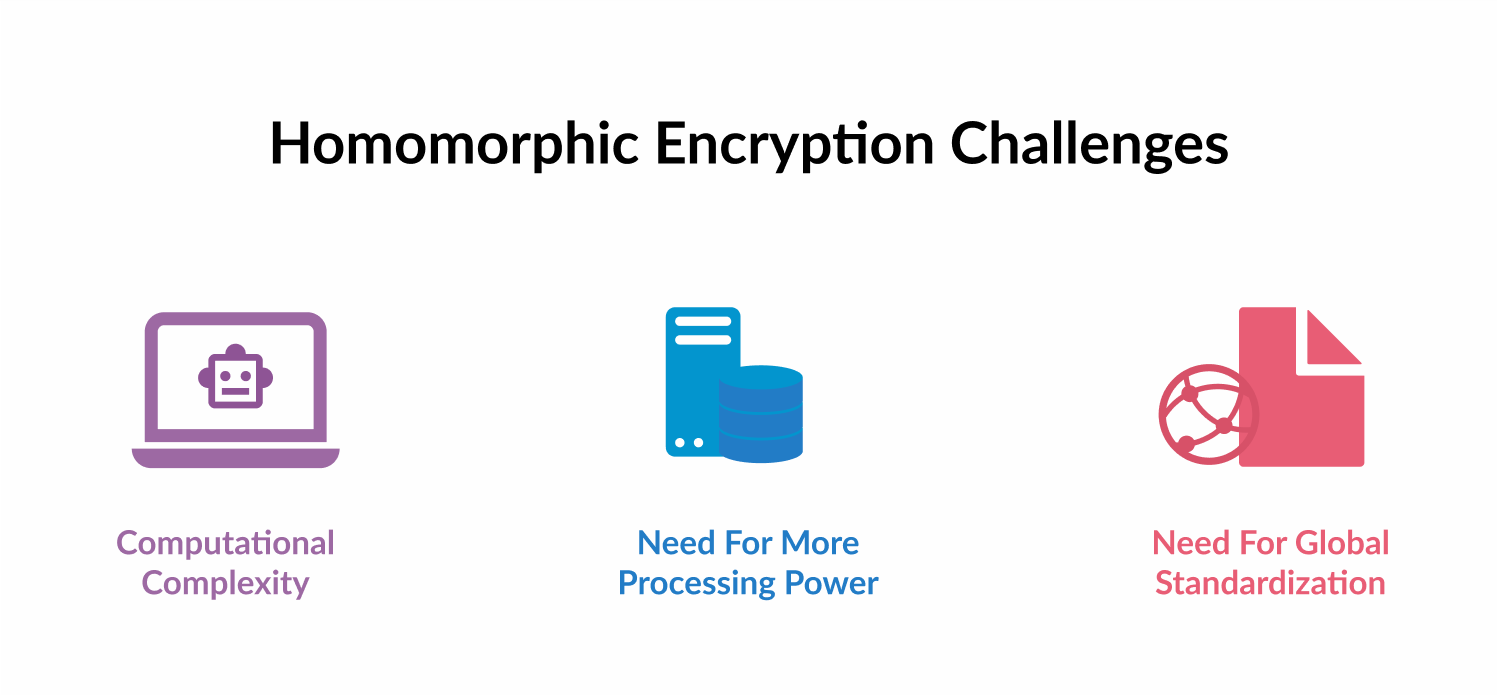The Role & Effects of Homomorphic Encryption in Modern Data Security
4 min read
Summary
Slowly but surely, digital transformation is reshaping every aspect of our lives. As technological progress marches on, it’s easy to forget how important it is to keep our most sensitive information safe, especially in sectors like the healthcare industry and financial services. Aside from being the very foundation of our society, they are also hotbeds for sensitive data that, if compromised, could lead to unprecedented breaches of privacy and security. Luckily, we have homomorphic encryption (HE), a groundbreaking technology that is changing the paradigm of data security and privacy-enhancing technologies.
Understanding Homomorphic Encryption and Why It Is Important
To put it simply, homomorphic encryption (HE) allows users and companies to work with encrypted data without having to decrypt it. This means sensitive information can remain encrypted even as it’s being used or analyzed, which is an absolute game-changer for industries that handle confidential data.
In practical terms, HE has broad applications across various fields. Financial services can leverage it for secure fraud detection and risk assessment, healthcare organizations can use it to analyze patient data without compromising privacy, and educational institutions can improve services with data analysis under strict confidentiality.
This approach to encryption isn’t just about protecting data. It’s also about enabling these industries to utilize the full potential of their data to innovate and improve their services, all while adhering to legal and regulatory compliance standards.
As such, HE is not just enhancing existing data security practices but redefining the possibilities for using encrypted data in safe, innovative ways.
Homomorphic Encryption In Practice
Homomorphic encryption truly is the peak of cryptographic ingenuity. Understanding what it does is pretty simple. But fully comprehending all the different ways it can be utilized demands a closer examination. So, let’s explore what fields will be impacted by the rise of HE.

Public Sector
Public service is one area where the applications of homomorphic encryption are both broad and profound. Governments and public institutions can use homomorphic encryption to improve the efficiency and effectiveness of public services without compromising the privacy of citizens.
For example, encrypted data analysis can lead to smarter urban planning decisions, such as optimizing traffic management systems to reduce congestion without needing access to individuals’ location data.
Additionally, HE can fortify national security measures by enabling the analysis of encrypted communications and financial transactions for threat detection, all while preserving the confidentiality of the data involved.
Tech Sector and Cloud Computing
The tech sector, particularly cloud computing, stands to reap significant benefits from the adoption of homomorphic encryption. With HE, cloud service providers can offer unbreachable data privacy, allowing clients to analyze and process their data in the cloud without having to decrypt it.
This capability opens up new possibilities for businesses to leverage cloud resources for data analytics, artificial intelligence training, and more, without the looming threat of data breaches or unauthorized access.
Furthermore, HE allows for more data sovereignty. This means that companies can now comply with strict data residency regulations by processing data in any location without exposing it to local jurisdictions.
Education, Science, Research
In education and research, homomorphic encryption has opened up new possibilities to utilize data for insights and scientific advancements. Educational institutions can analyze students’ performance and learning patterns to create personalized learning experiences that cater to each student’s needs without compromising their privacy.
For research institutions, HE enables secure data sharing and collaboration by facilitating groundbreaking research in fields like genetics, climate science, and epidemiology.
This means that researchers across borders and institutions can share sensitive data sets without risking the exposure of personal or proprietary information. Simply put, they can now increase the pace of discovery while maintaining strict ethical standards.
Manufacturing and Supply Chain Management
In the manufacturing sector and supply chain management, homomorphic encryption offers incredibly effective solutions to optimize operations and enhance security. It allows companies to securely analyze encrypted data to optimize production schedules, manage inventory levels, and predict maintenance for machinery without revealing sensitive operational information.
For example, HE strengthens supply chain security by ensuring that data shared between suppliers, manufacturers, and distributors remains encrypted. With this, organizations can mitigate the risk of intellectual property theft and ensure that competitors or hackers cannot exploit operational insights.
Energy Sector Optimization
The energy sector can utilize HE to manage and distribute energy more efficiently. It lets energy providers analyze encrypted usage data to better understand consumption patterns without compromising privacy. This way, utilities can make their systems more efficient, cut waste, and better integrate unpredictable renewables like solar and wind power into the grid.
It is also an important technology for making the energy sector greener and more sustainable. It enables the secure analysis of data on energy production, consumption, and storage, which are all important for the smooth integration of renewable energy sources.
It all boils down to two crucial advantages: building trust between consumers and providers by protecting privacy; and supporting the shift towards more sustainable and ecologically acceptable practices.
The Path Forward with Homomorphic Encryption
There are a few non-trivial challenges between homomorphic encryption and its widespread adoption. They primarily boil down to computational complexity and the overarching need for global standardization.
One problem for organizations is that HE operations currently require considerably more processing power compared to traditional encryption methods. If these demands aren’t met, it results in slower performance – especially for complex or large-scale data analysis tasks.
However, everywhere we look, the world is already moving to greater computational power. Quantum computing, cloud, blockchain, and other innovations – are all rising technologies that demand even more power than homomorphic encryption.
It’s only a matter of time before homomorphic encryption becomes the norm. Whether you will be ahead of the curve and proactively adapt this technology to gain a significant competitive edge or wait until you have to adapt it just to keep up – the choice is obvious.

Conclusion
At first glance, the promise of homomorphic encryption sounds simple and trivial. Just another advanced encryption system, right? Yet, as we go below the surface, it becomes obvious that we’re talking about a technological marvel that will redefine how we utilize sensitive data across a broad spectrum of industries. And in this blog, we’ve demonstrated the wide utility of this groundbreaking technology.
However, when we’re considering the worldwide use of homomorphic encryption, the road ahead isn’t without its challenges. There’s a need for wider standardization and more computational power. However ongoing advancements in processing power and concerted efforts towards global protocols paint a picture of a very near future where these obstacles are surmounted.
But you don’t have to wait for the world to catch up.
Our team of skilled, agile, and IBM-certified professionals can examine your existing systems and help you upgrade, migrate, and integrate homomorphic encryption so that your company remains at the bleeding edge of technology way before government mandates!
Contact us today, and unlock the full potential of your data without compromising on privacy and security!
You may also like…
Unlocking the Power of Custom AI with InstructLab
5 min readSummary In the dynamic landscape of artificial intelligence, the ability to create models tailored to unique business needs is more than a competitive edge—it's a necessity. InstructLab, a collaborative initiative from IBM and Red Hat, is revolutionizing AI...
Strengthening Authentication in the Digital Age with IBM Verify
5 min readSummary In today’s interconnected world, the importance of robust authentication systems cannot be overstated. As digitalization accelerates, safeguarding sensitive data and critical systems has become a top priority for businesses. Effective access...
From Data Chaos to Data Confidence: Real-World Use Cases of IBM Data Product Hub
5 min readSummary In a world where data streams in from every direction—transactions, patient records, supply chain logs, and more—businesses often face “data chaos.” Instead of powering innovation, their data sits scattered in different formats and systems, making it...




